Safety Detectors Buying Guide
Common types of sensors to ensure comprehensive safety
Safety detectors are an essential part of any home or business safety plan. They can detect a variety of hazards, including smoke, carbon monoxide, gas leaks, water leaks and intruders. By alerting people to danger early on, safety detectors can help prevent injuries, deaths and property damage.
Smoke detectors are the most common type of safety detector. They can detect smoke from a variety of sources, including fires, cooking and smoking. Smoke detectors come in two main types: ionization and photoelectric. Ionization smoke detectors are more responsive to fast-moving, flaming fires. Photoelectric smoke detectors are more responsive to slow-burning, smoldering fires. For the best protection, it is recommended to install both ionization and photoelectric smoke detectors in a home or business.
Uses and applications: Residential and commercial | Homes | Businesses | Warehouses | Any environment where fire is a safety or property damage concern
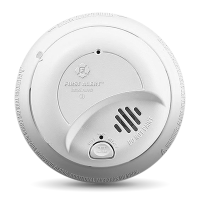
Responding to changes in temperature, heat detectors are versatile tools. They find applications in environments where smoke detection might lead to false alarms, such as kitchens. These detectors are available in several temperature types. There are two detection types: fixed temperature and rate-of rise. Fixed temperature detectors activate when the heat reaches the preset range of the detector. The most common temperature types are 135°F (used for garages or dusty, dirty environments) and 194°F (attics or other high heat areas). Rate-of-rise detectors activate when the temperature in the room increases rapidly within a short period — typically, a 15-degree change in under a minute.
Uses and applications: Industrial and commercial | Garages | Kitchens | Areas with high humidity
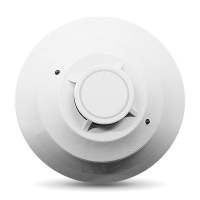
Carbon monoxide (CO) is a colorless, odorless gas that can be deadly. Carbon monoxide detectors can detect CO leaks from appliances, such as furnaces, water heaters and stoves. They are indispensable in homes and businesses where any gas-powered device poses a potential risk. CO detectors come in two main types: electrochemical and semiconductor. Electrochemical CO detectors are more accurate and reliable than semiconductor CO detectors. Semiconductor CO detectors are less expensive than electrochemical CO detectors, but they are more prone to false alarms.
Uses and applications: Residential and commercial | Homes | Businesses | Restaurants | Warehouses | Any environment where gas-powered devices pose a potential risk
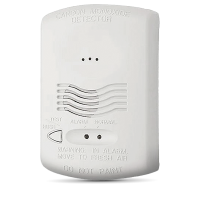
Combination detectors provide a dual function by integrating smoke and carbon monoxide detection capabilities. This not only streamlines safety measures but also reduces the number of devices required, making them a practical choice for comprehensive safety solutions. These types of detectors are a good option to provide a holistic approach to protection, especially in environments with multifaceted risks.
Uses and applications: Residential and commercial | Any environment or situation where streamlining the number of smoke and CO detection devices is preferred
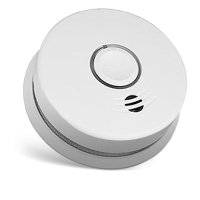
Duct smoke detectors — installed within heating, ventilation and air conditioning (HVAC) systems — play a vital role in preventing the spread of smoke through ventilation systems in commercial buildings. By detecting smoke within ducts, they contribute to the overall safety of large structures. Duct smoke detectors are often integrated into a building's overall fire alarm system, which allows for a coordinated response. The installation and use of duct smoke detectors are typically governed by local building codes and standards.
Uses and applications: Primarily commercial and industrial | Restaurants | Corporate offices |Warehouses | Any similar environment
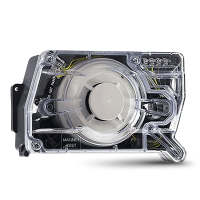
Designed to detect the presence of flames, flame detectors are commonly used in industrial settings where the risk of fire is higher. They quickly identify the onset of a fire, triggering alarms and safety protocols. Although primarily used for industrial applications, flame detectors can also be used in residential settings to protect against fires caused by flammable liquids and gases.
Uses and applications: Primarily commercial and industrial | Oil and gas facilities | Power plants | Other industrial environments

Gas detectors can detect a variety of gases, including propane and natural gas. They are often used in industrial and commercial settings to protect against gas leaks, but they can also be used in residential settings to protect against gas leaks from appliances and heaters. From residential kitchens to industrial facilities, these detectors ensure swift responses to gas leaks, helping to prevent catastrophic events.
Uses and applications: Primarily commercial | Restaurants | Hotels | Factories | Laboratories
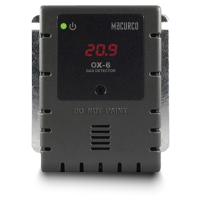
While not traditionally associated with safety, water leak detectors are integral in preventing property damage. These detectors identify leaks early, particularly in areas prone to water damage, contributing to a comprehensive safety strategy. There are two primary types of water leak detectors: passive and active. Passive detectors rely on the presence of water to complete an electrical circuit or trigger a signal. Active detectors actively monitor the area for signs of water using sensors like probes, spot detectors or even cameras to identify leaks.
Uses and applications: Residential and commercial | Basements | Crawl spaces | Near water heaters | Under sinks | Near washing machines and dishwashers | Any area prone to water damage
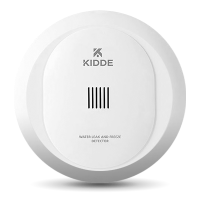
Intrusion detection is a critical aspect of safety. The most common types of sensors used to detect unauthorized movement are passive infrared motion detectors (PIR) and PIR/microwave motion detectors. Microwave only motion detectors are also available, but these are usually not a desirable choice due to their high potential for false alarms. Motion detectors are widely used in security systems for both homes and businesses. PIR detectors are typically used in more controlled spaces like a home, office or school. Combination devices are used in more harsh environments such as warehouses or garages.
Uses and applications: Residential and commercial | Homes | Corporate offices | Schools | Businesses

Glass break detectors are designed to identify the sound of breaking glass, providing an additional layer of security against forced entry. They are integral components of comprehensive security systems and are particularly useful for securing doors and windows that are vulnerable to forced entry through glass breakage. These detectors are typically installed on walls or ceilings near the windows or glass doors they are protecting. They should be positioned within the specified range of the protected glass.
Uses and applications: Residential and commercial | Homes | Offices | Schools | Businesses
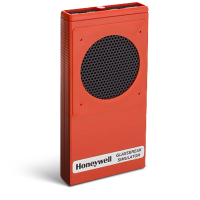
Magnetic door detectors, also known as magnetic door contacts or magnetic door switches, are devices used in security and access control systems to monitor the status of doors, windows or other access points. These detectors are designed to signal whether a door or window is open or closed and can be an essential component of security and automation systems. Magnetic door detectors can be wired or wireless. Wired versions require physical connections to a control panel or monitoring system. Wireless models use radio signals to transmit data to a central controller, which can be more convenient for installation and flexibility.
Uses and applications: Residential and commercial | Homes | Offices | Schools | Businesses | Any residential or commercial environment

When choosing safety detectors for your customer's home or business, it is important to consider the following factors:
These devices act as an entry point to a broader safety ecosystem, offering opportunities for integration into comprehensive home and commercial safety systems for your customers. Selecting the right detectors for them not only ensures immediate response to specific threats but also opens avenues for offering them other relevant products and services.

Need help choosing the right detectors for your customer? ADI's Systems Design team is here to help installers and dealers find the right products while providing the guidance needed to ensure that a project is a success from start to finish. Get in touch with our Systems Design team today by filling out a short form.
Learn More
Register your project with ADI for free and offer your customers the best price for top-performing products and solutions. Get in touch with our Project Registration team today by filling out a short form.
Learn More